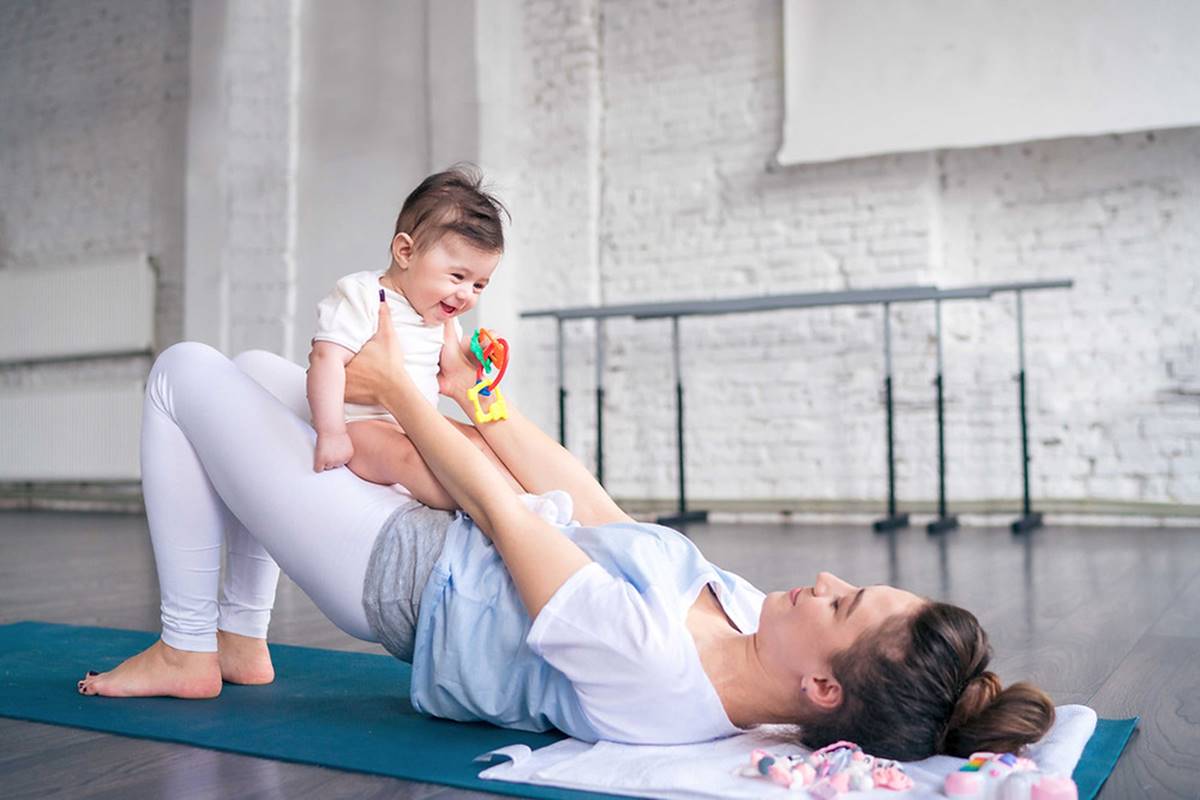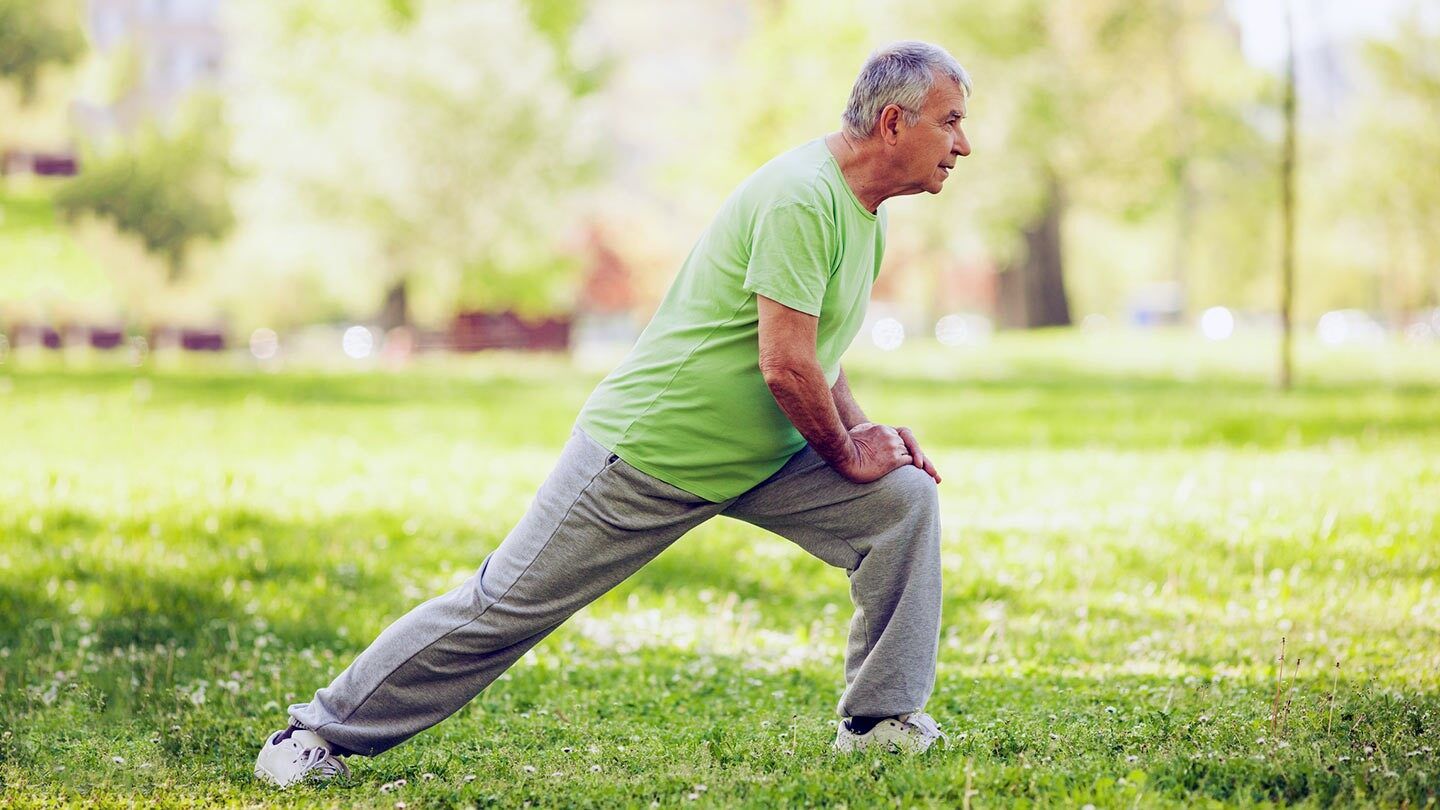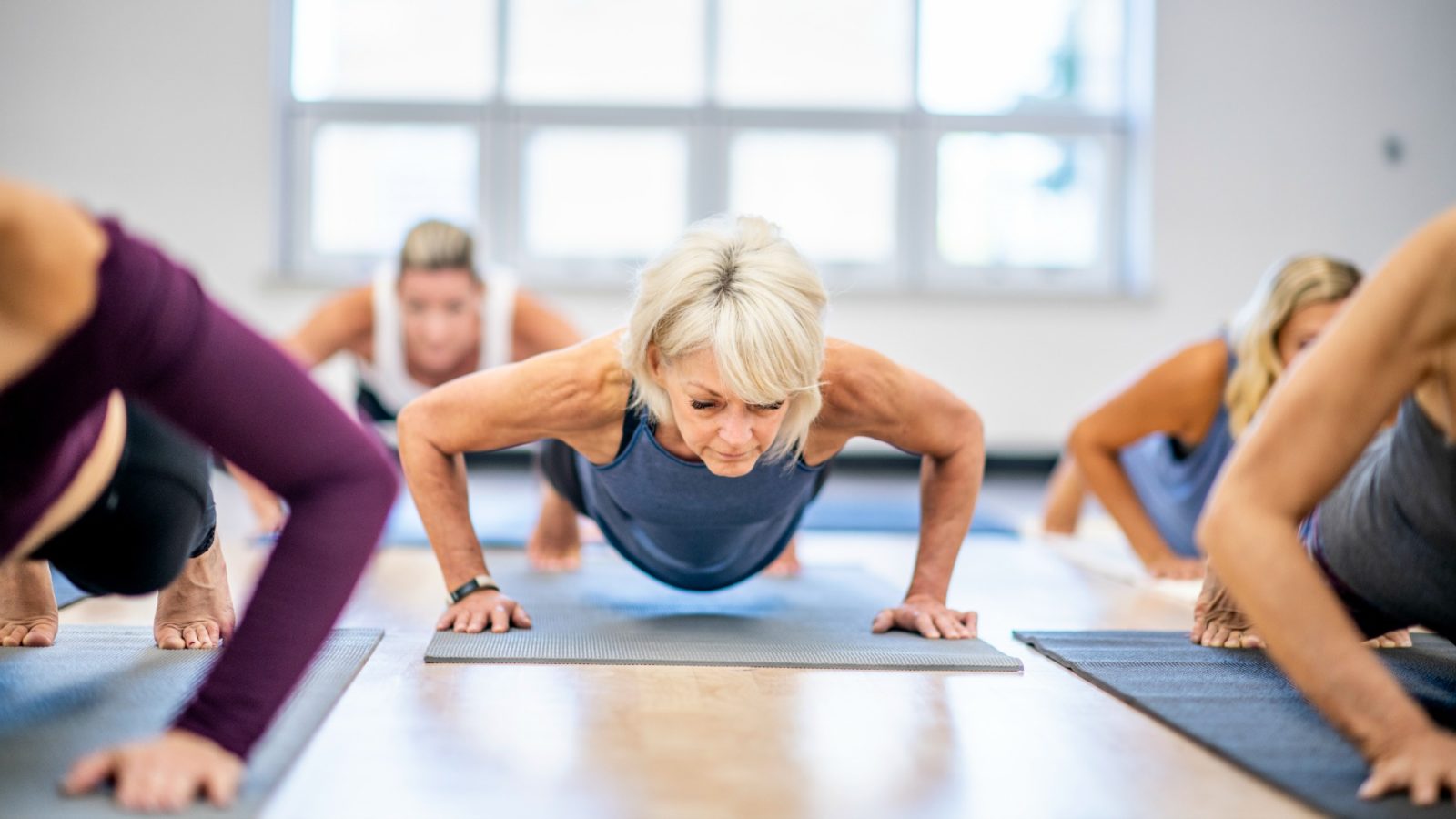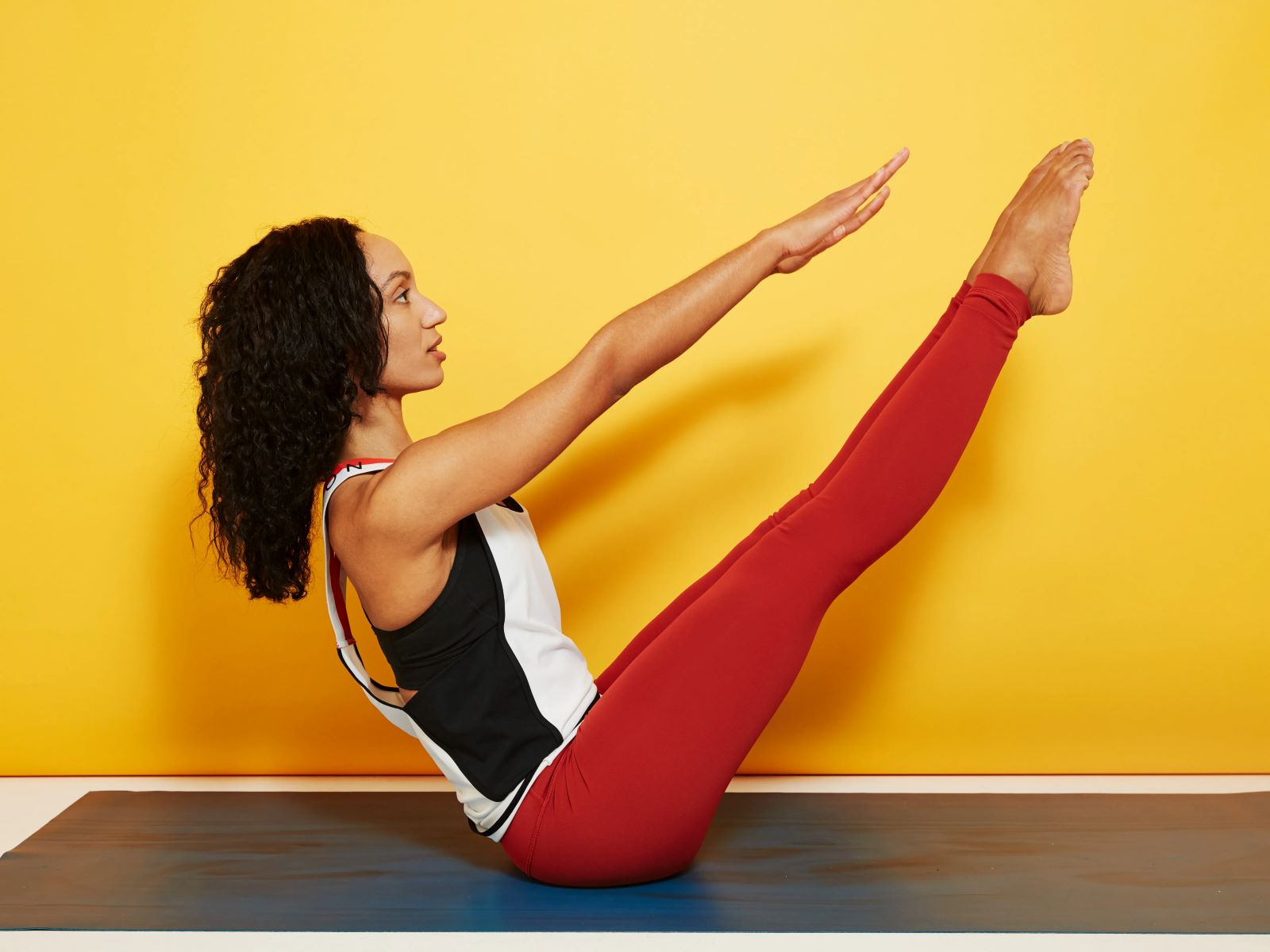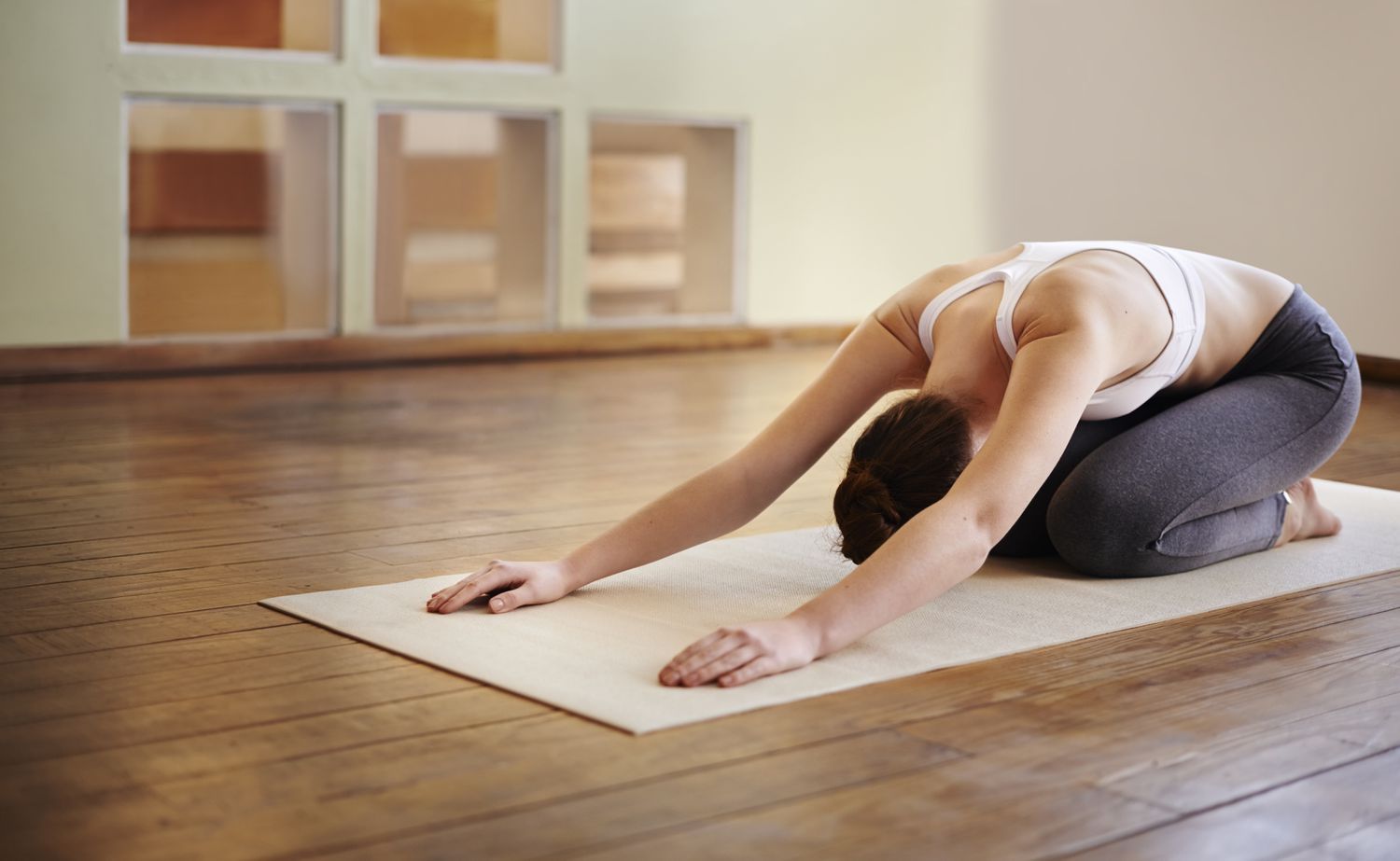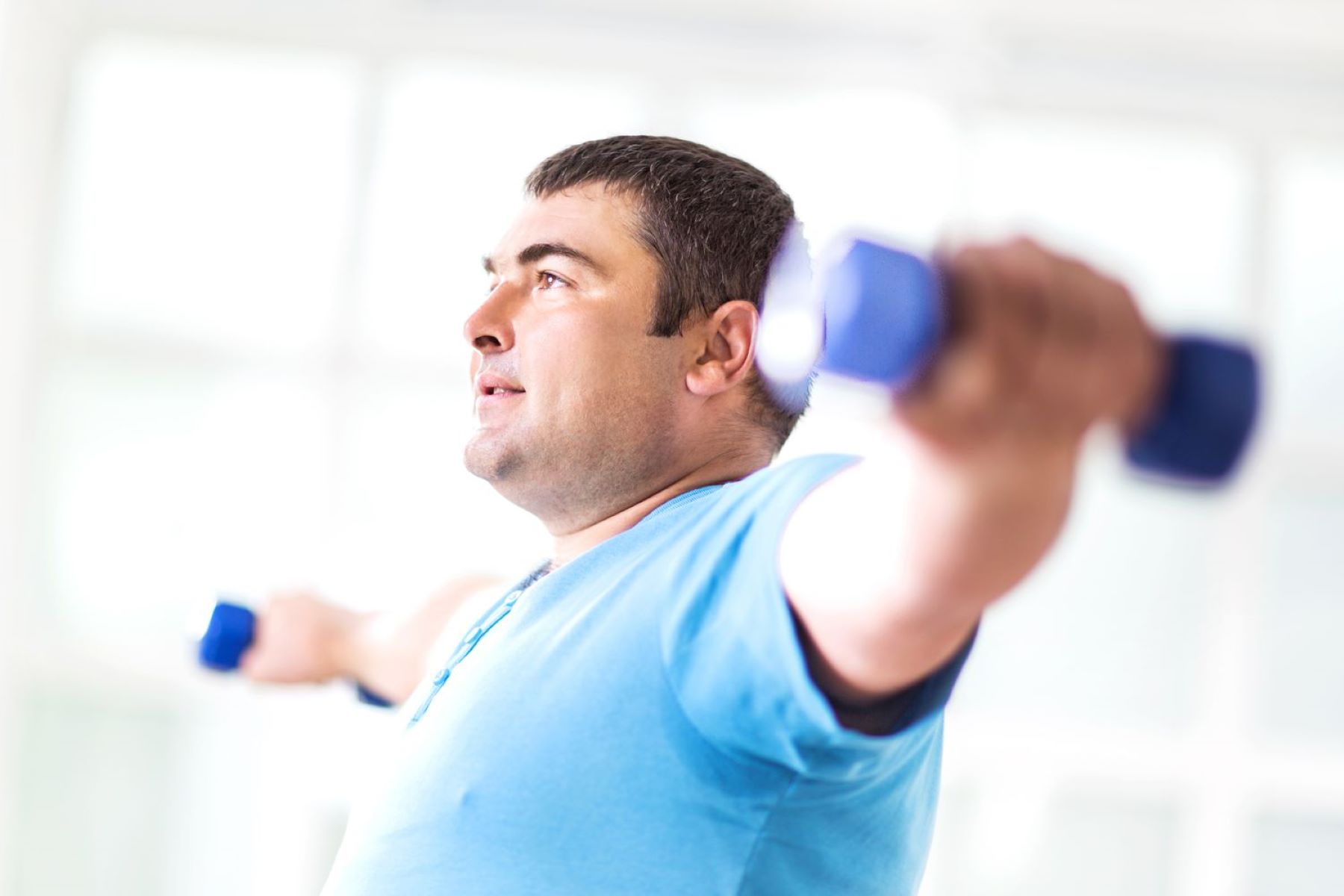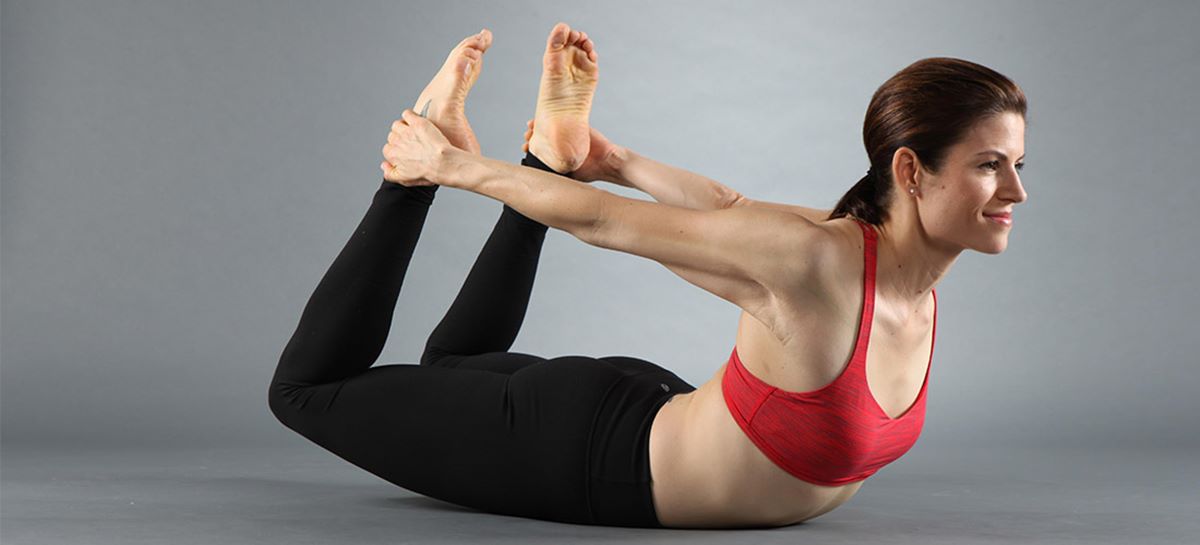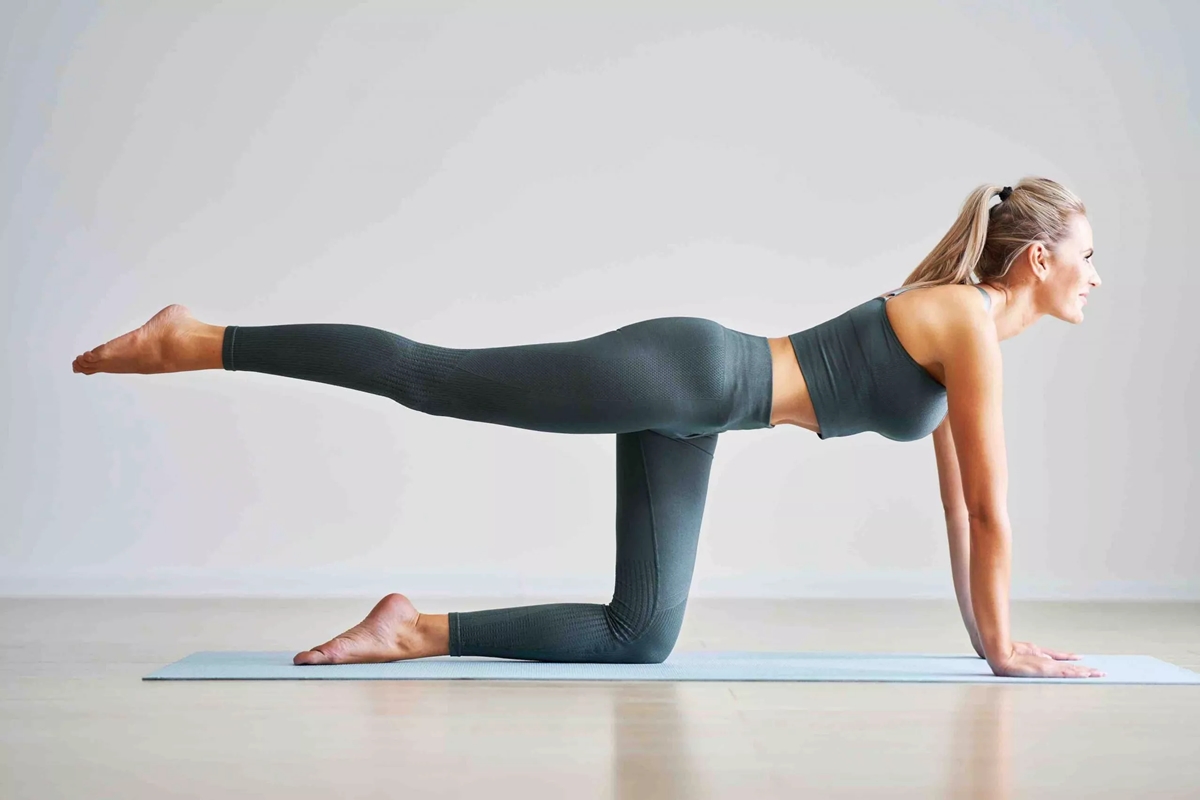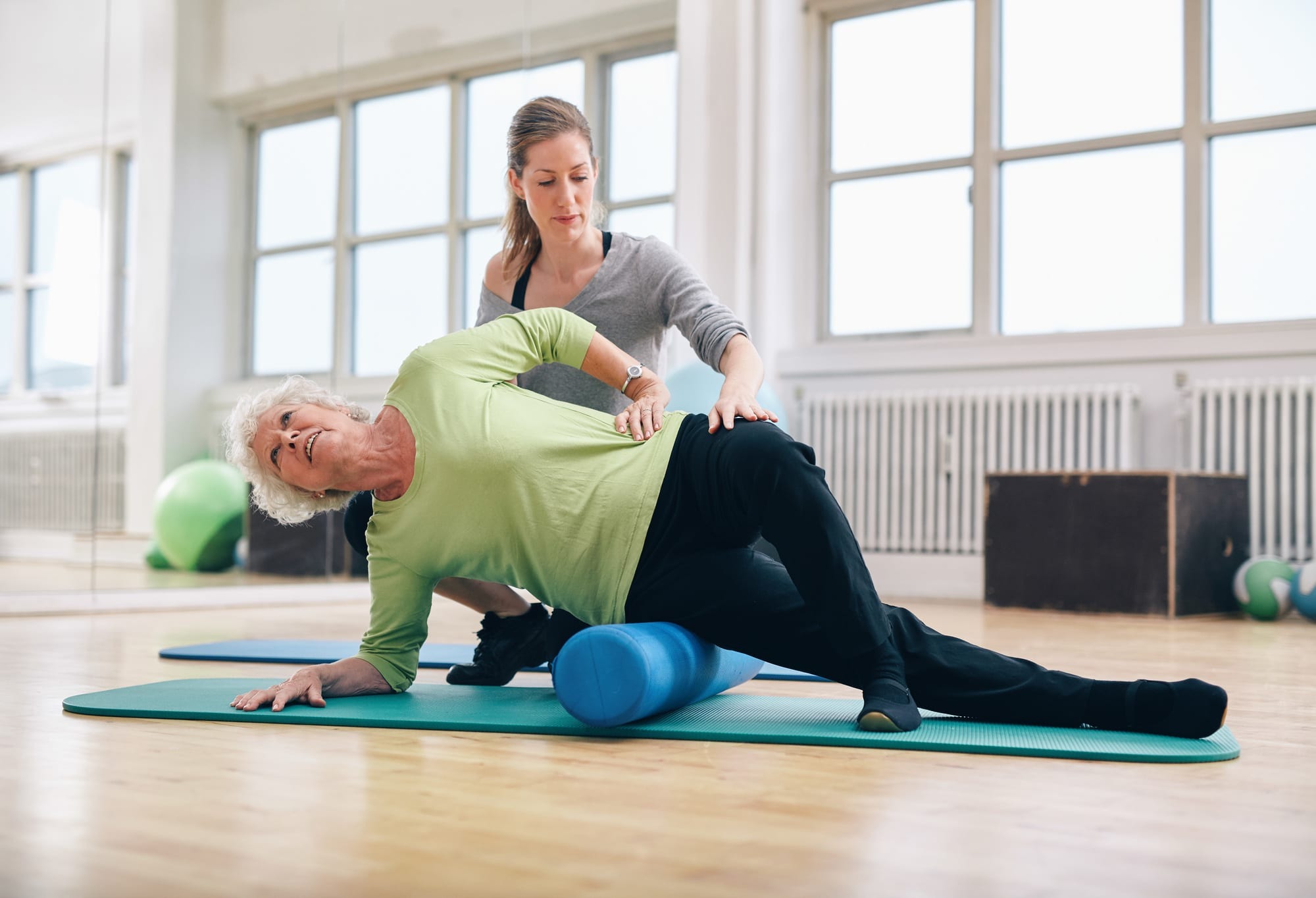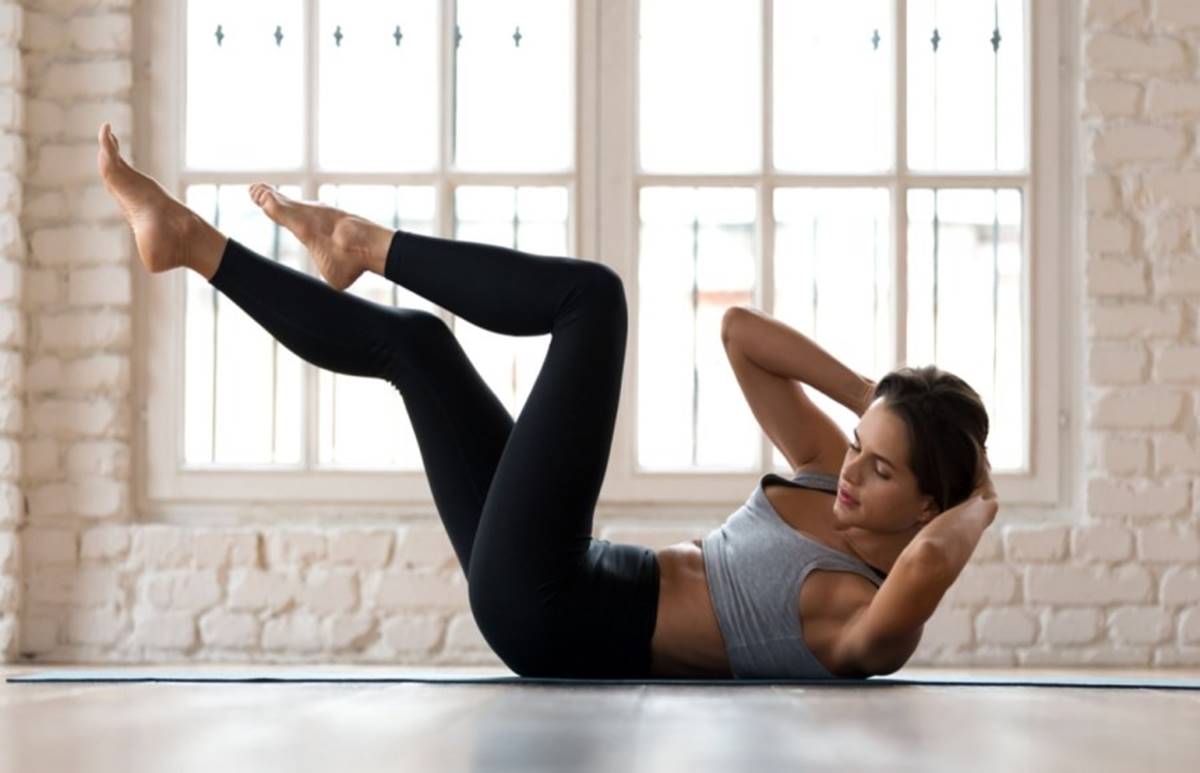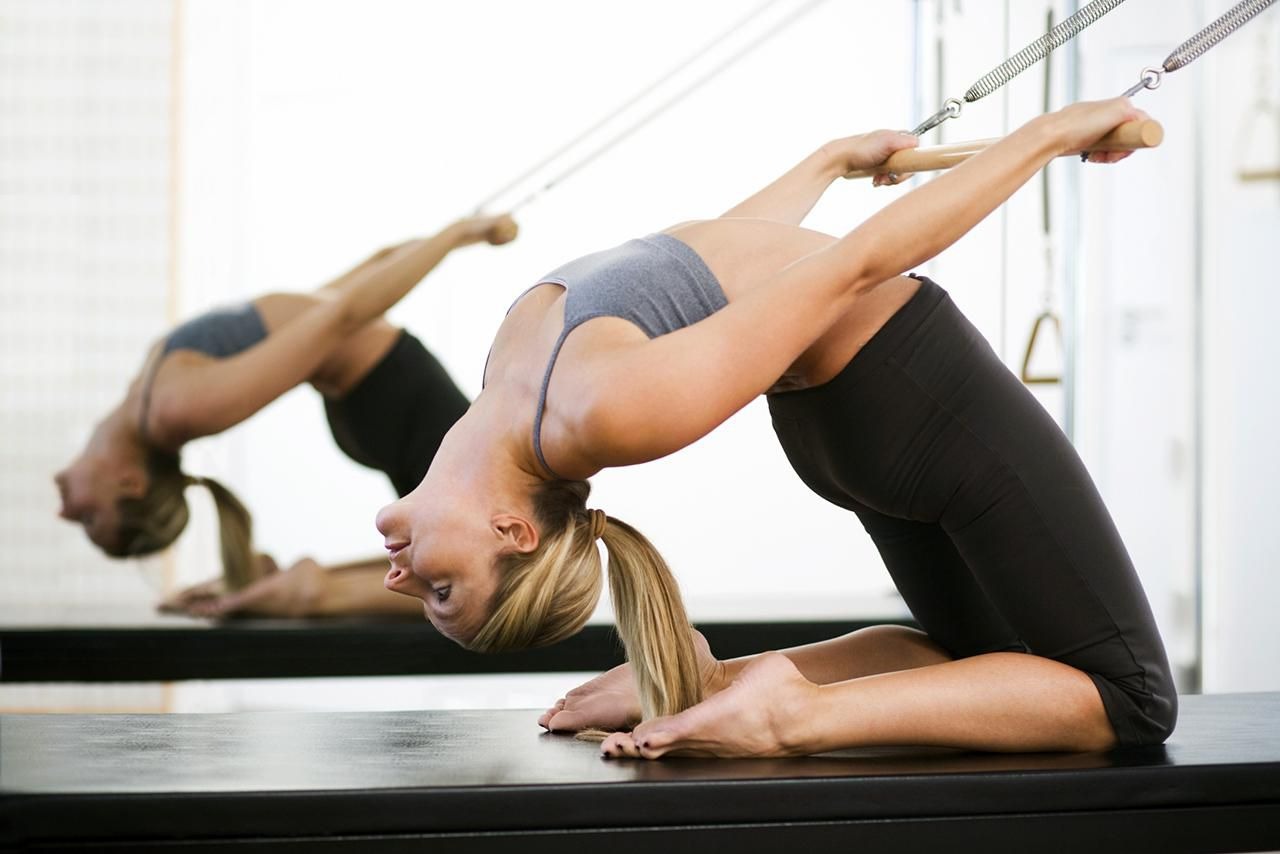

Featured
What Type Of Exercise Is Pilates
Modified: January 2, 2024
Discover the featured exercise of Pilates and its benefits for increasing flexibility, building core strength, and improving posture. Learn what type of exercise Pilates is and how it can enhance your overall fitness routine.
Introduction
Pilates is a popular form of exercise that has gained widespread recognition for its ability to improve strength, flexibility, and overall body awareness. Developed in the early 20th century by Joseph Pilates, this unique exercise method has been embraced by people of all ages and fitness levels.
The practice of Pilates focuses on strengthening the core muscles, improving posture, and promoting a balanced and aligned body. Unlike traditional workouts that isolate specific muscle groups, Pilates emphasizes whole-body movement and incorporates elements of flexibility, control, and precision.
Many individuals are drawn to Pilates not only for its physical benefits but also for its mental and emotional advantages. By integrating breathing techniques and mind-body awareness, Pilates creates a harmonious connection between the body and the mind, fostering a sense of inner peace and well-being.
Whether you are a fitness enthusiast looking to switch up your routine or someone seeking rehabilitation from an injury, Pilates offers a versatile and effective approach to achieving your health and wellness goals.
In this article, we will delve into the history of Pilates, explore its core principles, discuss its numerous benefits, and take a closer look at the different types of Pilates exercises and equipment available. By the end, you will have a better understanding of this dynamic form of exercise and be equipped with the knowledge to embark on your Pilates journey.
History of Pilates
The history of Pilates dates back to the early 20th century when Joseph Pilates, a German-born fitness enthusiast, developed a unique exercise method that combined elements of gymnastics, yoga, and martial arts. Originally named “Contrology,” Pilates believed that his exercises could help individuals achieve a balanced body and mind.
Joseph Pilates initially designed his method as a way to rehabilitate injured soldiers during World War I. He utilized bed springs attached to hospital beds to provide resistance and support for patients. This innovative approach allowed individuals to exercise and regain strength, even while bedridden.
After the war, Joseph Pilates immigrated to the United States and opened a studio in New York City. He and his wife, Clara, began teaching their method to dancers, who quickly embraced it for its effectiveness in improving flexibility, alignment, and overall performance.
Over the years, word of Pilates’ unique approach to exercise spread, and his method gained popularity among both professional athletes and everyday individuals seeking a holistic approach to fitness. Today, Pilates is practiced worldwide, with a wide range of modifications and variations to suit different needs and preferences.
The original principles and exercises developed by Joseph Pilates still form the foundation of the practice. The emphasis on core strength, breath control, proper alignment, and mindful movement remain essential elements of Pilates workouts, regardless of the modifications or equipment used.
Joseph Pilates continued teaching and refining his method until his death in 1967. However, it was his disciples who carried on his legacy, spreading the practice throughout the fitness community. Today, there are various schools of Pilates, each with its own approach and focus, but all rooted in Joseph Pilates’ original philosophy.
It’s fascinating to see how the Pilates method has evolved and grown in popularity over the years. From its humble beginnings as a rehabilitation technique to its present status as a mainstream form of exercise, Pilates has proven itself to be a versatile and effective approach to fitness and wellness.
Principles of Pilates
The Pilates method is built upon a set of core principles that guide the practice and ensure its effectiveness. These principles serve as the foundation for proper alignment, control, and mindful movement. Understanding and applying these principles can enhance the benefits of Pilates and optimize your workout experience.
1. Centering: The core, often referred to as the “powerhouse,” is the focal point of Pilates. Centering involves initiating movement from the deep abdominal muscles and pelvic floor, creating a strong and stable foundation for all exercises. This principle emphasizes the connection between the mind and body, fostering awareness of movement from the center.
2. Concentration: Pilates requires focused attention and concentration. By focusing the mind on the execution of each movement, you can enhance body awareness and maximize the effectiveness of the exercise. Concentration helps to develop precision, control, and proper alignment.
3. Control: Central to Pilates is the idea of control. Each movement should be performed with precision and deliberate control, rather than relying on momentum or external forces. This principle emphasizes the importance of maintaining proper form and alignment throughout the entire range of motion.
4. Precision: Pilates places great emphasis on precision in movement. Each exercise has a specific alignment and a defined pathway. By performing movements with precision, you can target specific muscles and improve overall body awareness, leading to greater results.
5. Breath: Proper breathing is an essential component of Pilates. The breath should be deep, diaphragmatic, and coordinated with movement. It helps to oxygenate the body, facilitate muscle engagement, and promote relaxation. The synchronization of breath and movement enhances the mind-body connection and allows for a more efficient and effective workout.
6. Flow: Pilates exercises are designed to flow smoothly from one movement to another, creating a sense of continuity and grace. The transitions between exercises should be seamless and fluid, promoting a sense of balance and harmony within the body.
These principles serve as a guide for practicing Pilates and can be applied to both mat-based exercises and those performed using specialized equipment. By incorporating these principles into your Pilates practice, you can enhance your strength, flexibility, and body awareness while experiencing the full benefits of this transformative exercise method.
Benefits of Pilates
Pilates offers a multitude of benefits for both the body and mind. Whether you are a seasoned athlete or new to fitness, incorporating Pilates into your routine can have a positive impact on your overall well-being. Here are some of the key benefits of practicing Pilates:
1. Improved Core Strength: Pilates focuses on strengthening the muscles of the core, including the abdominals, back, and pelvic floor. This leads to improved stability, better posture, and reduced risk of back pain and injuries.
2. Increased Flexibility: Pilates exercises emphasize stretching and lengthening of the muscles, leading to improved flexibility and joint mobility. Enhanced flexibility can help improve performance in other physical activities and prevent muscle imbalances.
3. Enhanced Body Awareness: Pilates encourages mindful movement and body awareness. Through concentration and control, you develop a deeper understanding of your body’s alignment, movement patterns, and limitations. This heightened body awareness can help improve coordination and overall movement efficiency.
4. Improved Posture: The emphasis on core stability and proper alignment in Pilates helps to correct postural imbalances and promotes a more upright posture. By strengthening the muscles that support the spine, Pilates can alleviate back, neck, and shoulder pain caused by poor posture.
5. Increased Muscle Tone: Pilates exercises target and strengthen both large and small muscle groups, resulting in improved muscle tone and definition throughout the body. This can lead to a more sculpted appearance and increased confidence in your physical capabilities.
6. Stress Relief: Pilates incorporates breathing techniques and mindful movement, which can help reduce stress and promote relaxation. The focused nature of Pilates allows you to disconnect from external distractions and connect with your body and breath, creating a sense of calm and balance.
7. Injury Prevention and Rehabilitation: Pilates is widely recognized for its ability to aid in injury prevention and rehabilitation. The controlled and low-impact nature of Pilates exercises make it suitable for individuals recovering from injuries or suffering from chronic pain. Pilates can help strengthen weakened muscles, improve flexibility, and restore balance in the body.
8. Increased Energy and Vitality: Regular practice of Pilates can boost energy levels and improve overall vitality. The combination of physical movement, breath control, and mental focus can invigorate the body and promote a sense of well-being.
As you can see, Pilates offers a wide range of benefits for both the body and mind. Whether you are looking to improve your physical fitness, enhance your posture, or find a way to relax and destress, Pilates can be a transformative practice that brings numerous benefits to your life.
Types of Pilates Exercises
Pilates offers a diverse range of exercises that can be tailored to individual needs and preferences. From mat-based exercises to those utilizing specialized equipment, there are several types of Pilates exercises to explore. Let’s take a closer look at some of the most common types:
1. Mat Pilates: Mat Pilates is the foundation of Pilates exercises and can be practiced anywhere with a comfortable surface. These exercises typically involve bodyweight movements and utilize a series of controlled, flowing movements to target various muscle groups. Mat Pilates exercises focus on core strength, flexibility, and body alignment.
2. Reformer Pilates: The Pilates Reformer is a versatile piece of equipment consisting of a sliding carriage, springs, and straps. Reformer Pilates exercises are performed on this apparatus, offering adjustable resistance and support. This type of Pilates allows for a wide range of movements that target specific muscles or muscle groups, providing a full-body workout with added challenge and control.
3. Cadillac Pilates: The Cadillac, also known as the Trapeze Table, is a piece of equipment that features a bed-like structure with bars, straps, and springs. Cadillac Pilates exercises involve a combination of mat-based movements and movements performed on the apparatus. The Cadillac offers a variety of options for leveraging bodyweight, resistance, and stability for an effective and versatile workout.
4. Wunda Chair Pilates: The Wunda Chair is a compact piece of equipment that consists of a pedal, springs, and handles. Wunda Chair Pilates exercises focus on strengthening the core, improving stability, and enhancing balance. The chair allows for a wide range of seated and standing movements, offering modifications and progressions suitable for various fitness levels.
5. Pilates Props and Accessories: In addition to the core equipment mentioned above, Pilates workouts often incorporate a variety of props and accessories. These can include resistance bands, stability balls, foam rollers, Pilates circles, and more. Props and accessories add diversity and challenge to Pilates exercises, targeting specific muscle groups and adding variety to the routine.
With the variety of Pilates exercises available, it’s important to find the type of Pilates that aligns with your goals and preferences. Whether you prefer mat-based exercises for at-home workouts or enjoy the versatility of equipment-based Pilates, incorporating Pilates exercises into your fitness routine can help improve strength, flexibility, and overall body awareness.
Mat Pilates
Mat Pilates is a popular and accessible form of Pilates that can be practiced anywhere with a comfortable surface. These exercises focus on bodyweight movements and controlled, flowing sequences that target various muscle groups while promoting core strength, flexibility, and body alignment.
Mat Pilates exercises utilize the body’s own resistance and gravity to challenge and strengthen muscles, making it an effective workout for individuals of all fitness levels. The exercises typically involve a series of precise movements that engage the core muscles, including the abdominals, back, and glutes.
Some common Mat Pilates exercises include the Hundred, which involves lying supine with the legs lifted off the ground and pumping the arms up and down while breathing deeply; the Roll-Up, where you gradually articulate the spine to roll up to a seated position and then roll back down to the mat; and the Pilates Plank, a modified version of a traditional plank that focuses on core stability and engagement.
One of the benefits of Mat Pilates is its versatility. The exercises can be modified to accommodate different fitness levels, making it suitable for beginners and advanced practitioners alike. Variations and progressions can be added to increase the challenge and intensity of the workout.
In Mat Pilates, proper form and alignment are crucial. The focus is on controlled and precise movements, rather than speed or quantity. Engaging the core and maintaining proper alignment throughout the exercises ensures optimal results and reduces the risk of injury.
Mat Pilates can be done using just a mat, but additional props such as resistance bands, balls, or small weights can be incorporated to add variety and challenge. These props can provide additional resistance, support, or assistance in certain exercises, allowing for a more diverse and engaging workout.
Practicing Mat Pilates regularly can lead to a myriad of benefits. It can improve core strength and stability, enhance flexibility, increase body awareness, and promote better posture and alignment. It can also help with relaxation and stress reduction, as the mindful movement and focus on breath in Mat Pilates create a sense of calm and mindfulness.
Whether you are a beginner or a seasoned fitness enthusiast, Mat Pilates provides a convenient and effective way to strengthen your body, improve your flexibility, and enhance your overall well-being. With its accessibility and versatility, Mat Pilates is a great option for individuals looking to incorporate Pilates into their fitness routine without the need for specialized equipment.
Reformer Pilates
Reformer Pilates is a dynamic and versatile form of Pilates that utilizes a specialized piece of equipment called the Pilates Reformer. This apparatus consists of a sliding carriage, springs, ropes, and straps, offering adjustable resistance and support for a full-body workout.
Reformer Pilates exercises are performed on the Reformer, which provides a wide range of movements to target specific muscles or muscle groups. The resistance from the springs creates a challenging workout that strengthens and tones the body while improving flexibility and promoting proper alignment.
One of the key advantages of Reformer Pilates is its ability to offer options for all fitness levels. The adjustable resistance and various attachments on the Reformer allow for modifications and progressions, making it suitable for beginners to advanced practitioners.
Reformer Pilates exercises focus on core stability, balance, and controlled movement. By engaging the core and aligning the body properly, the exercises develop strength in the abdominals, glutes, back, and other supporting muscles. The sliding carriage and other components of the Reformer create a dynamic and challenging workout that engages muscles throughout the entire range of motion.
Some examples of Reformer Pilates exercises include leg presses, chest presses, and hamstring curls, which target the lower body; arm exercises like rowing and bicep curls, which work the upper body, and exercises that challenge core stability such as the Short Box Series or the Elephant.
Reformer Pilates allows for a greater variety of exercises compared to mat-based Pilates, targeting muscles from different angles and offering more options for resistance and range of motion. This variety keeps workouts engaging and helps to prevent plateaus in progress.
Reformer Pilates offers numerous benefits, including improved strength, flexibility, and posture. It can enhance athletic performance, increase body awareness, and aid in injury rehabilitation. The balanced and controlled movements performed on the Reformer promote efficient muscle recruitment, helping to create a strong, toned, and well-aligned body.
While Reformer Pilates is usually taught in a studio with a qualified instructor, some Pilates enthusiasts invest in home Reformer machines for convenient workouts. Whether in a studio setting or at home, Reformer Pilates provides a challenging and effective workout that can be customized to meet individual fitness goals.
Reformer Pilates is a fantastic option for individuals looking for a versatile and dynamic workout that strengthens the entire body, improves flexibility, and promotes optimal body alignment. Whether you are a beginner or an experienced Pilates practitioner, Reformer Pilates offers an exciting and challenging way to reach your health and fitness goals.
Cadillac Pilates
Cadillac Pilates, also known as the Trapeze Table, is a specialized piece of equipment that adds variety and versatility to Pilates workouts. The Cadillac features a bed-like structure with bars, springs, straps, and other attachments, offering a wide range of exercises for a comprehensive, full-body workout.
With its numerous configurations, the Cadillac allows for exercises that can be modified to suit different body types, abilities, and specific needs. The various attachments and adjustable springs provide support, resistance, and assistance, making it a valuable tool for both fitness enthusiasts and individuals seeking rehabilitation from injuries.
Cadillac Pilates exercises often combine elements of mat-based Pilates with movements performed on the apparatus. This combination challenges the body’s stability, strength, and flexibility while targeting specific muscle groups. The exercises on the Cadillac emphasize core stability, spinal alignment, and controlled movement.
Some examples of Cadillac Pilates exercises include the Leg Springs, which work the lower body by using the springs for resistance; the Roll Back, which focuses on spinal articulation and core control; and the Pull-Ups, which emphasize upper body strength and stability as you lift your body weight using the bars and springs of the Cadillac.
One of the key benefits of Cadillac Pilates is its versatility in addressing both rehabilitation needs and advanced fitness goals. The Cadillac can provide support and assistance for individuals recovering from injuries or those who require modifications, while also offering challenging exercises for advanced practitioners looking to further enhance their strength and flexibility.
Cadillac Pilates is particularly beneficial for improving postural alignment, as it offers the opportunity to stretch and strengthen the muscles responsible for maintaining proper posture. By targeting the core, back, and shoulder muscles, Cadillac Pilates can help alleviate muscle imbalances and postural issues caused by sedentary lifestyles or poor habits.
Another advantage of Cadillac Pilates is its ability to provide targeted strength and flexibility training. With the adjustable springs and attachments, individuals can isolate and work specific muscle groups, aiding in muscle conditioning and enhancing overall body awareness. This targeted approach can be especially beneficial for athletes looking to improve their performance in sports or other physical activities.
Whether used for rehabilitation or advanced training, Cadillac Pilates offers a safe and effective way to improve strength, flexibility, and overall body function. Its versatility and adaptability make it suitable for users of all fitness levels, from beginners to seasoned Pilates practitioners.
If you’re looking to expand your Pilates practice and experience a diverse and challenging workout, Cadillac Pilates is an excellent option. From its ability to support rehabilitation to its capacity for advanced strength training, the Cadillac can provide a highly effective Pilates experience that enhances your overall fitness and well-being.
Wunda Chair Pilates
Wunda Chair Pilates is a unique and challenging form of Pilates that utilizes the Wunda Chair, a compact and versatile piece of equipment. The Wunda Chair consists of a wooden or metal frame with a pedal, springs, and handles, allowing for a wide range of seated and standing exercises.
Wunda Chair Pilates focuses on strengthening the core, improving stability, and enhancing balance. The chair provides varying levels of resistance that can be customized to individual fitness levels. It offers opportunities for both support and challenge, making it suitable for all levels of practitioners, including beginners and advanced students.
The exercises in Wunda Chair Pilates engage the entire body, targeting not only the core muscles but also the upper and lower body. They promote controlled and precise movements that require focus, balance, and coordination.
Some examples of Wunda Chair Pilates exercises include seated leg presses, which target the lower body by pushing against the resistance of the springs; standing arm exercises, such as the arm circles or the tricep press, which work the upper body and core stability; and standing balance exercises like the single-leg balance, which challenge stability and coordination.
Wunda Chair Pilates offers several benefits for individuals looking to enhance their Pilates practice. The chair provides an additional dimension to traditional mat exercises, offering more stability and assistance for those who need it, and adding challenge and variety for those seeking advanced workouts.
One of the unique aspects of Wunda Chair Pilates is its ability to challenge balance and proprioception. The seated and standing exercises on the chair require heightened body awareness and stability, enhancing coordination and functional strength.
Wunda Chair Pilates is also effective for target-specific strength and conditioning. The chair allows for the isolation and activation of specific muscle groups, making it beneficial for rehabilitation purposes or for focusing on individual fitness goals.
The compact size of the Wunda Chair makes it a practical choice for home-based workouts or smaller studio spaces. It’s versatile enough to provide a full-body workout on its own or be incorporated into a larger Pilates session using other equipment or mat exercises.
Whether you’re a beginner or an experienced Pilates practitioner, Wunda Chair Pilates offers a challenging and effective way to strengthen your core, improve stability and balance, and work on targeted muscle conditioning. It’s a valuable addition to any Pilates routine, providing diversity, intensity, and enhanced body awareness.
If you’re looking to expand your Pilates practice and experience a dynamic and engaging workout, the Wunda Chair can offer a range of exercises that will enhance your strength, stability, and overall body function.
Pilates Props and Accessories
Pilates props and accessories are valuable additions to Pilates workouts, offering variety, challenge, and support. These props can enhance the effectiveness of exercises, add resistance or assistance, and target specific muscle groups. Incorporating props into Pilates routines can bring diversity and excitement to your practice. Here are some common Pilates props and accessories:
1. Resistance Bands: Resistance bands are versatile tools that provide added resistance and challenge during Pilates exercises. They increase the intensity of movements, helping to strengthen and tone specific muscle groups.
2. Stability Balls: Stability balls, also known as exercise balls, provide an unstable surface that engages core muscles and improves balance. They can be used for exercises that target the core, upper body, and lower body, adding variation and challenge to Pilates workouts.
3. Foam Rollers: Foam rollers are used in self-myofascial release techniques to release tight muscles and improve flexibility. They can be incorporated into Pilates warm-up or cool-down routines to enhance muscle recovery and relaxation.
4. Pilates Circles: Pilates circles, also called magic circles or fitness circles, are ring-shaped props made of flexible material with handles. They add resistance to exercises, particularly for targeting the arms, thighs, and core muscles. Pilates circles can enhance muscle engagement and add intensity to Pilates workouts.
5. Small Weights: Small hand weights, such as dumbbells or weighted balls, can be used to increase resistance and challenge during Pilates exercises. They are particularly beneficial for exercises that target the upper body, helping to build strength and definition.
6. Pilates Towels: Pilates towels can be used to support the body, cushion pressure points, or create variations in exercises. They provide additional comfort or help with maintaining proper alignment, especially during exercises that involve lying or sitting on a hard surface.
7. Mini Stability Balls: Mini stability balls are smaller versions of stability balls and can be used to increase instability and challenge certain exercises. They are often placed between the knees, ankles, or thighs to engage specific muscle groups and enhance core stability.
8. Toe Correctors: Toe correctors are small devices designed to improve foot alignment and flexibility. They can be used to correct or prevent foot conditions, such as bunions or toe deformities, and can complement Pilates exercises that focus on foot and lower limb strength.
The use of props and accessories in Pilates allows for an endless range of variations and modifications. They can be used to accommodate different fitness levels, target specific areas of the body, or add an extra challenge to the workout. However, it’s important to use these props under the guidance of a qualified Pilates instructor to ensure proper form and technique.
By incorporating Pilates props and accessories into your practice, you can effectively engage your muscles, add diversity to your workouts, and target specific areas for improved strength, flexibility, and overall body awareness. These props can bring an exciting new dimension to your Pilates routine, helping you progress and achieve your fitness goals.
Choosing the Right Pilates Workout for You
With the numerous types of Pilates exercises and equipment available, finding the right Pilates workout for your needs and preferences is essential. Here are some considerations to help you choose the right Pilates workout:
1. Fitness Level: Assess your current fitness level and choose a Pilates workout that aligns with it. If you’re a beginner, starting with mat-based Pilates or workouts that incorporate props can be a good option. For those with more experience, equipment-based workouts like Reformer or Cadillac Pilates can provide added challenge and variety.
2. Goals and Objectives: Determine your goals and what you want to achieve through Pilates. If your focus is on core strength and flexibility, mat-based Pilates can be a suitable choice. If you’re looking to build strength, improve posture, or target specific muscle groups, equipment-based Pilates workouts may be more appropriate.
3. Access to Equipment: Consider the availability of Pilates equipment. If you have access to a Pilates studio or gym that offers equipment-based classes, taking advantage of Reformer, Cadillac, or Wunda Chair workouts can provide a comprehensive and dynamic Pilates experience. If you prefer the convenience of home workouts, mat-based Pilates or workouts using portable props can be a viable option.
4. Personal Preferences: Take into account your personal preferences in terms of workout style, instructor-led classes, group settings, or solo sessions. If you enjoy the social atmosphere and motivation of group classes, consider joining a Pilates studio or gym. If you prefer the privacy and flexibility of working out at home, online tutorials or DVDs can provide guidance for independent practice.
5. Physical Limitations or Injuries: If you have any physical limitations or injuries, it’s important to choose a Pilates workout that caters to your specific needs. Consult with a qualified Pilates instructor or healthcare professional who can guide you in selecting exercises and modifications that are safe and suitable for your condition.
6. Trial and Error: It may take some trial and error to find the Pilates workout that resonates with you. Experiment with different styles, instructors, and equipment to see what feels comfortable and suits your preferences and goals. Don’t be afraid to explore various options until you find the Pilates workout that you enjoy and look forward to.
Remember, Pilates is a journey, and finding the right workout for you may involve some exploration and experimentation. Be patient, listen to your body, and seek guidance from qualified instructors to ensure a safe and effective Pilates practice.
Choosing the right Pilates workout is crucial to enjoying your fitness journey and achieving your desired outcomes. By considering your fitness level, goals, equipment availability, personal preferences, physical limitations, and willingness to explore, you can find the Pilates workout that suits you best. Whether it’s mat-based Pilates, equipment-based classes, or a combination of both, Pilates offers a versatile and effective approach to improving strength, flexibility, and overall well-being.
Conclusion
Pilates is a transformative form of exercise that offers numerous benefits for both the body and mind. Whether you choose mat-based Pilates, Reformer workouts, Cadillac or Wunda Chair exercises, or incorporate props and accessories, there is a Pilates workout suitable for everyone.
The history of Pilates, rooted in Joseph Pilates’ innovative approach to rehabilitation and body alignment, has evolved into a widely recognized and practiced method worldwide. The principles of Pilates, including centering, concentration, control, precision, breath, and flow, serve as guiding principles for a mindful and effective workout.
The benefits of Pilates are extensive. Improved core strength, increased flexibility, enhanced body awareness, improved posture, and stress relief are just a few of the advantages that Pilates offers. Pilates exercises target specific muscle groups, aiding in injury prevention and rehabilitation while promoting energy, vitality, and overall well-being.
Choosing the right Pilates workout involves considering your fitness level, goals, preferences, equipment availability, and any physical limitations or injuries. Whether you prefer the versatility and convenience of mat-based Pilates, the challenge and diversity of equipment-based workouts, or the added engagement of props and accessories, there is a Pilates workout that suits your needs.
Pilates is a journey of self-discovery and physical transformation. It offers a unique opportunity to connect your mind and body, enhancing your overall quality of life. Remember to listen to your body, seek guidance from qualified instructors, and enjoy the process as you explore the world of Pilates.
So, whether you embark on a Mat Pilates session in the comfort of your own home, sign up for Reformer classes at a local studio, or explore the various Pilates equipment and props, Pilates has the power to strengthen, tone, and rejuvenate your body while enhancing your mental and emotional well-being.
Begin your Pilates journey today and discover the incredible benefits that this exceptional form of exercise has to offer!
